Also known as: Cruciforme Megalítico do Alto da Cruz, Cromeleque Cruciforme do Alto da Cruz
English translation: “Menhirs of Peak of the Cross”, or “Megalithic Cross-Shape…” or “Cross-Shaped Cromlech…”
The wind blows gently through the trees and grass on the top of the Alentejan hill. On a cement block stands a tall geodesic marker. The stones beneath it seem diminished, but they have stood here far longer: many thousands of years longer. Their ancient markings defy the modern marker to last one tenth as long.
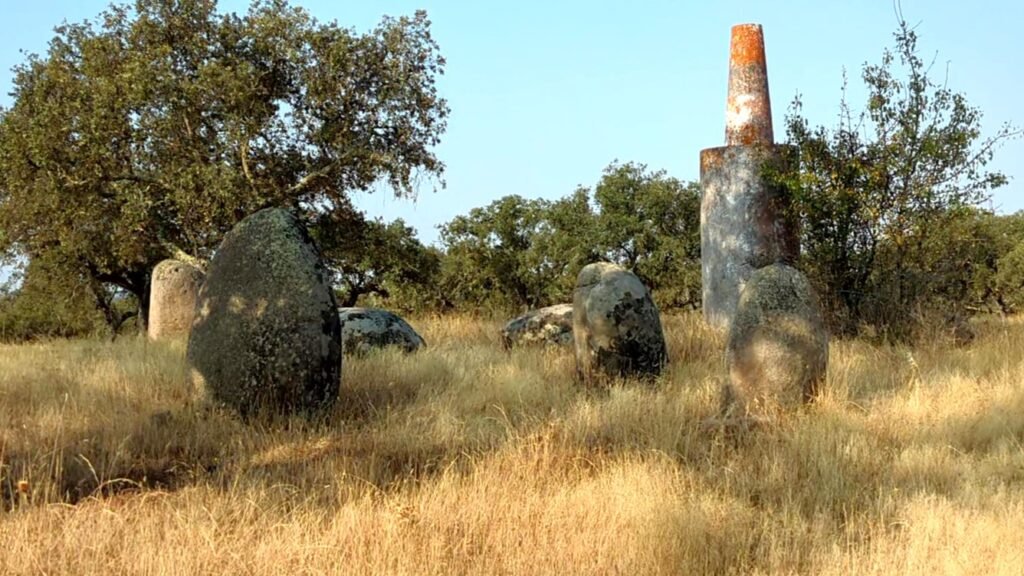
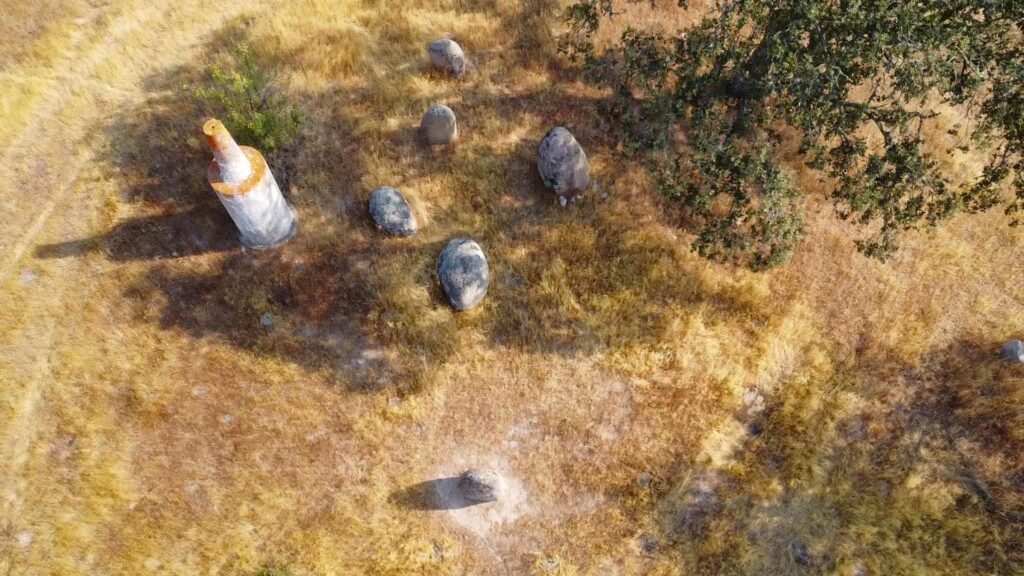
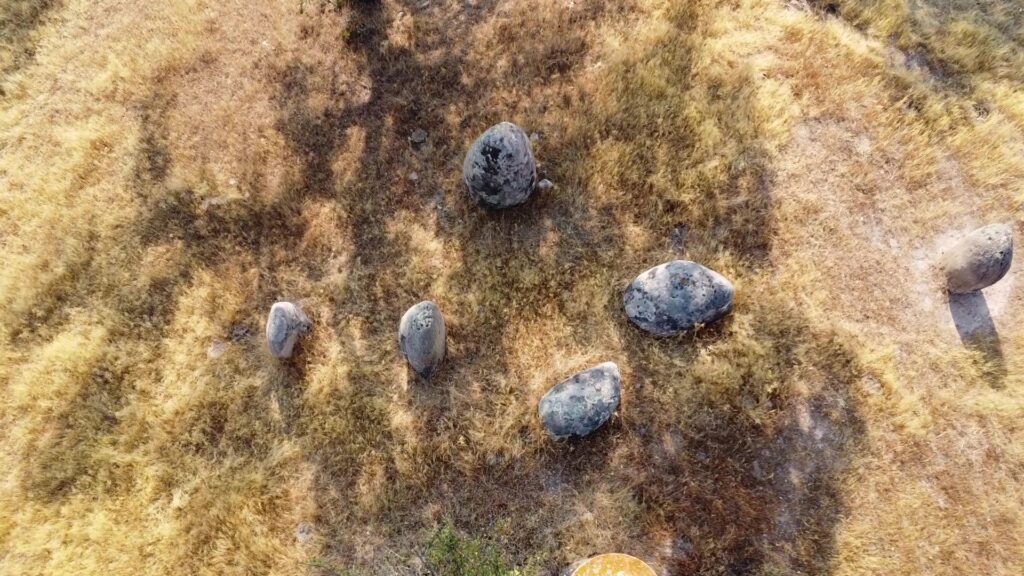
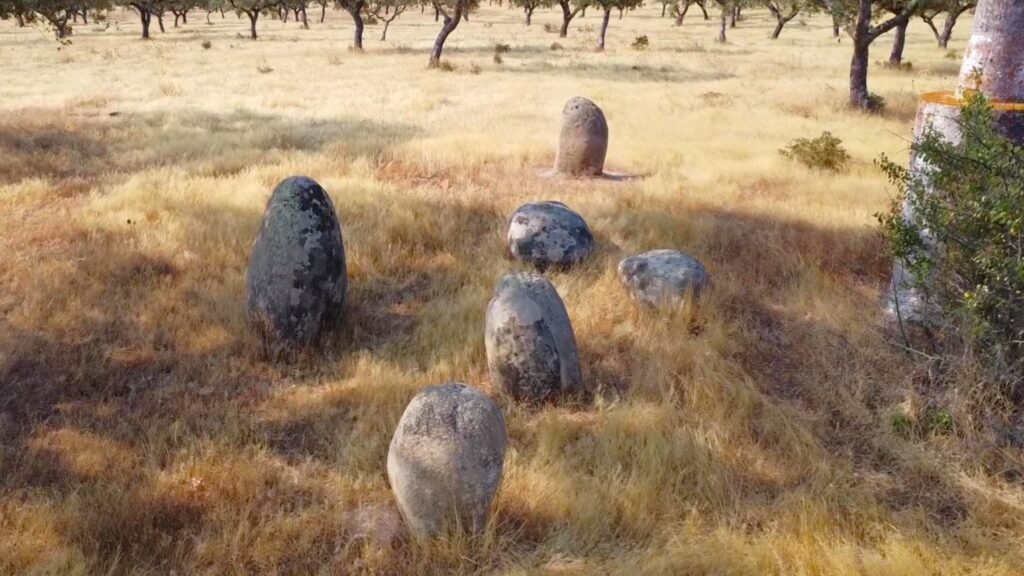
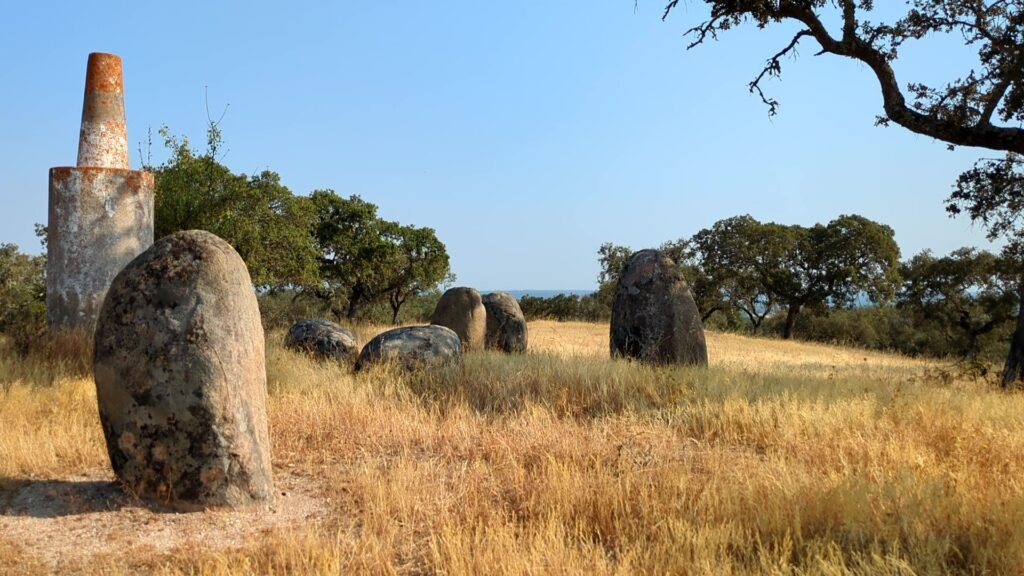
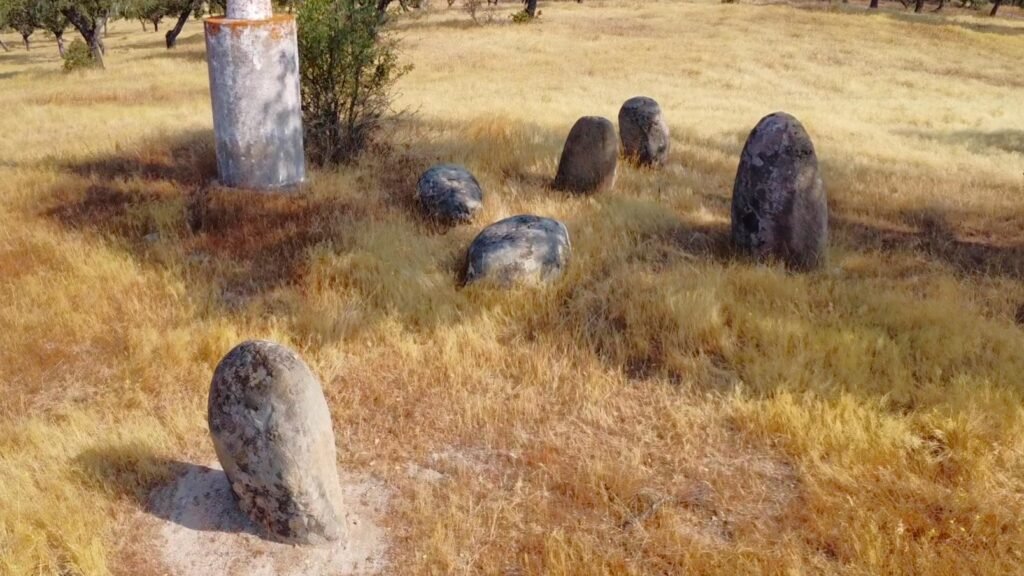
This group of menires (I’m using the Portuguese spelling) was first identified by archaeologists in 2011. Leonor Rocha led the team that excavated and rehabilitated it in that and the following year1. The stones were found in a fallen state, and it is likely that when workers set up the geodetic marker, naming it “Alto da Cruz,” they named it after the stones in the ground. (The toponym, “Alto da Cruz” or “Peak of the Cross,” is not locally known but it is the name of the marker.)
It is the only known group of menires in Iberia that make a cross-shaped pattern. Four lie along a 9m long line, running North-South (about 5º off), and the other two make a 4m long East-West line, bisecting the other line. (If you add in menir 7, the East-West line runs about 304 meters, with a 9 meter North-South line.)
During the excavation, it was not possible to make a very accurate dating of its construction. The absence of ceramics and the nature of the microliths collected indicate that this was likely done in the Early Neolithic2. The locations of at least five of the seven menires were verified by identifying the supporting structures or “alveoli” in which they had been placed. These menires were therefore re-erected.
Note: Leonor Rocha and Pedro Alvim do not use the term “cromeleque” in their paper. They refer to this site as the “menires do Alto da Cruz.” (In an early interview, they said that they’d nicknamed the site a “cruzleque.”3) That term is being used in the Archaeologists’ Portal. The Portuguese term, cromeleque, corresponds to the English term “cromlech” in its meaning as a group of menhirs. It usually refers to an enclosed circular shape, but not always. The term has become less commonly used by archaeologists, instead using the term conjunto, meaning a “group” or “set.” Cromeleque is still popularly used and I certainly refer to this conjunto as a cromeleque.
Several of the menires have cupules or cup-marks. (The Portuguese term is covinhas, which can be translated as “dimples.”) In particular, menir 2 has a number of marks on its top, while menir 6 has several deep and wide cup marks. Menir 5 has a large cup mark surrounded by smaller ones, forming circles around the big one in the centre.
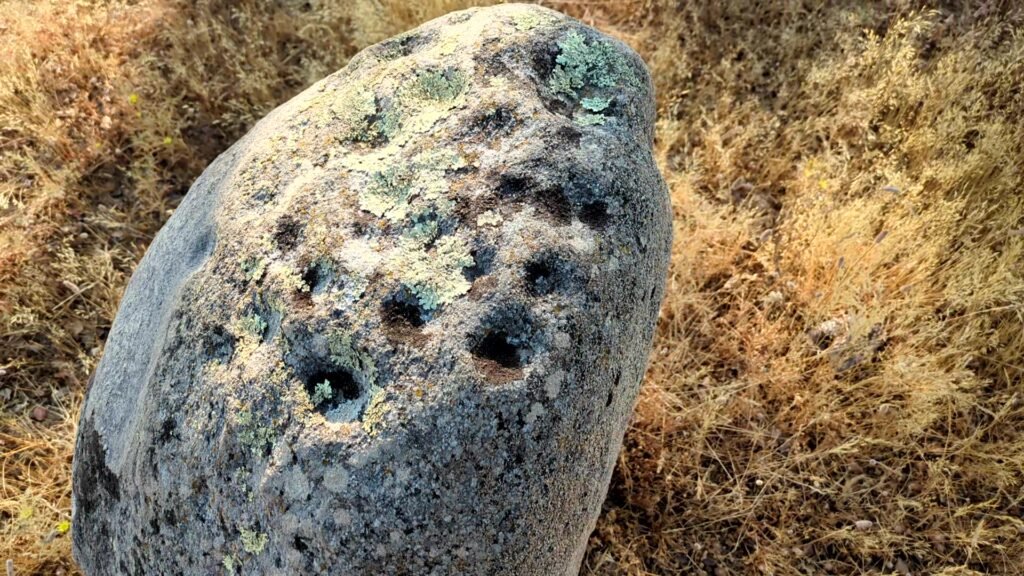
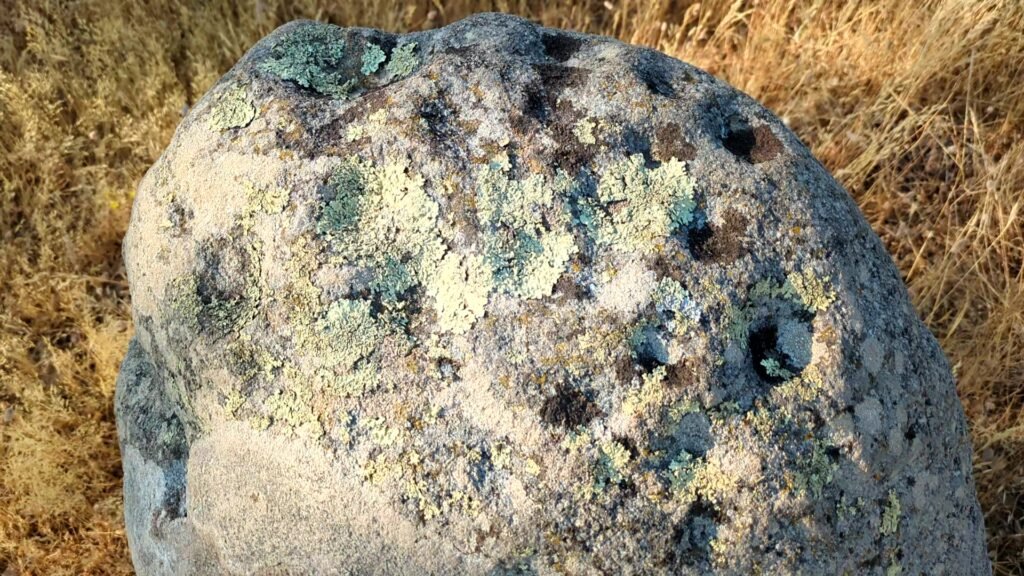
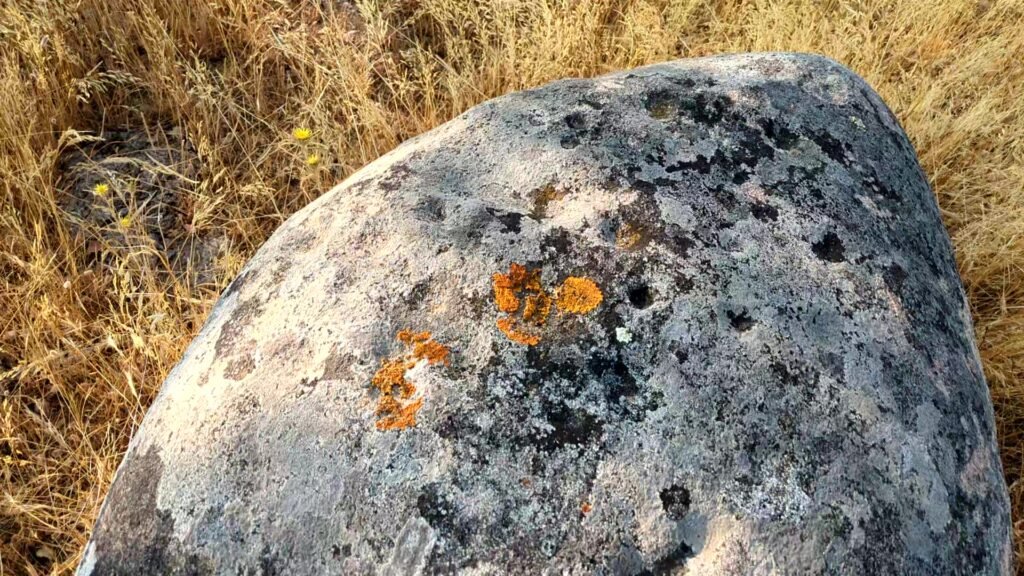
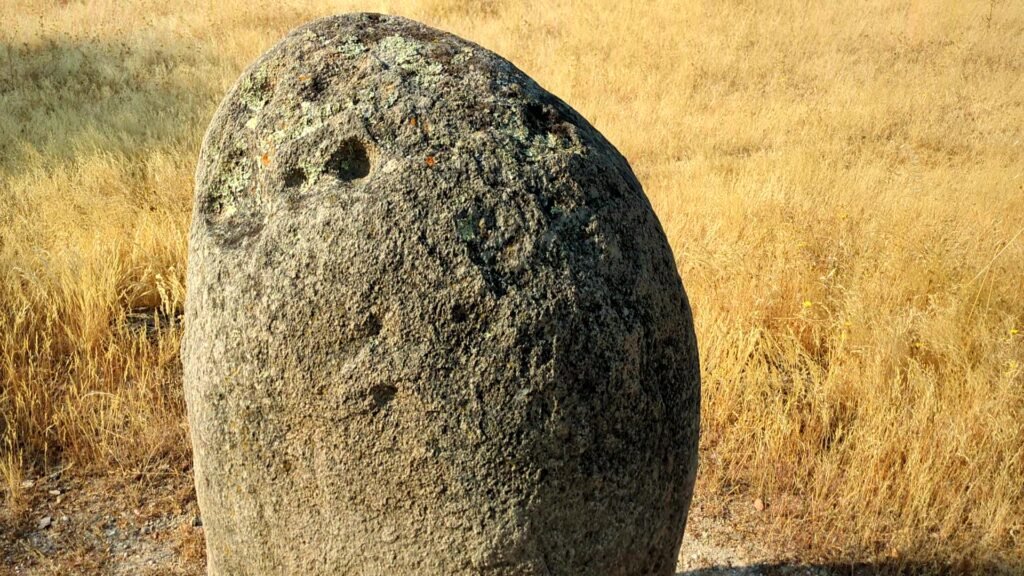
About 300 meters to the West, a single menir stands. It was first discovered by Leonor Rocha in 2002, about nine years before the others. It was first called the “Menir do Alto da Cruz,” but it is considered to be part of the group, and is designated Menir 7. It’s about 2.2m tall, and about 0.8m wide at its maximum. It has around 50 cup marks (“covinhas” in Portuguese), some connected.
During excavation, some Roman coins were found beneath Menir 7. Did this signify the re-use of the stone during Roman times? Was there a resurgence of ancient religions and a return to stone worshipping? It’s possible, but more research is needed.
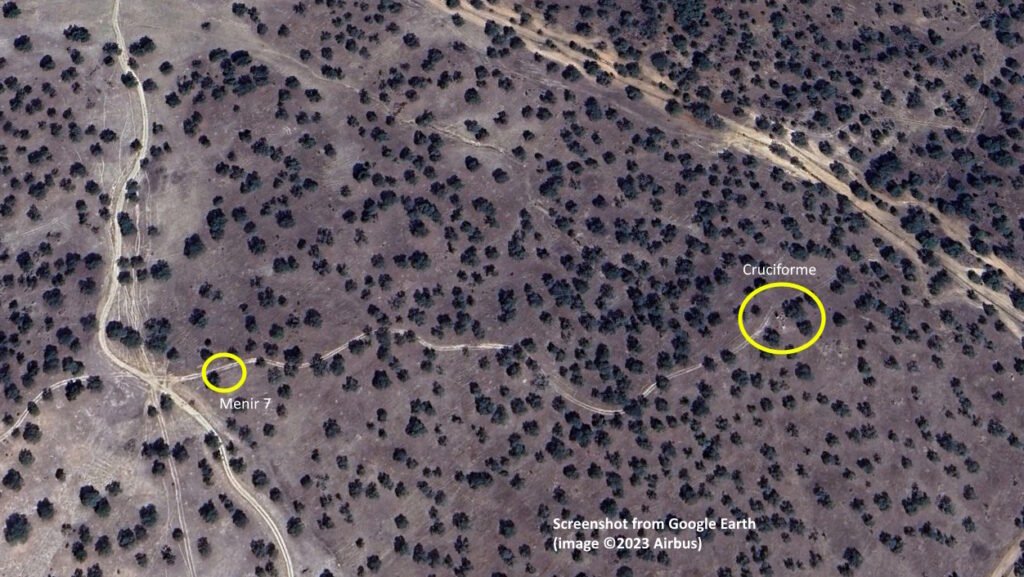
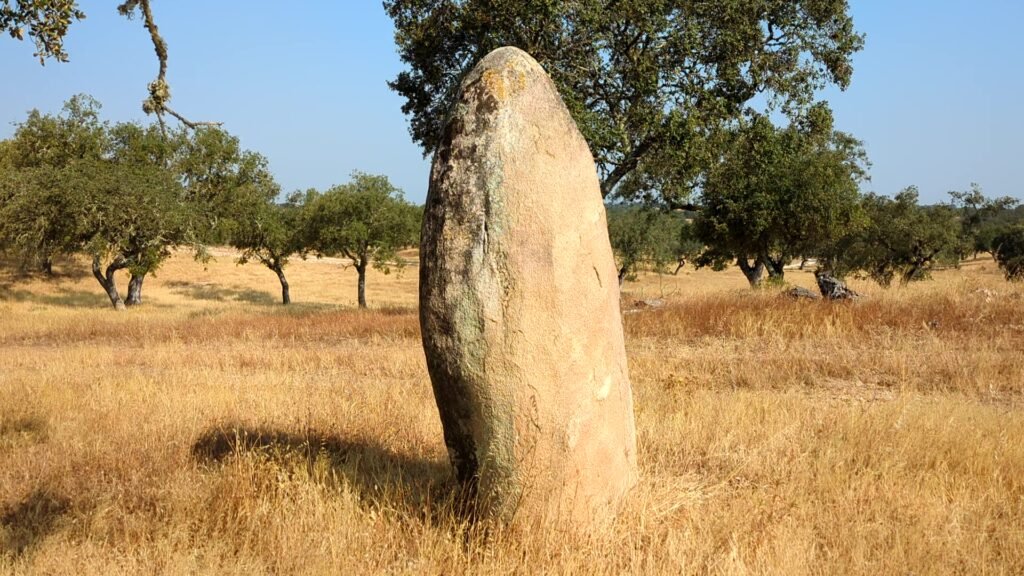
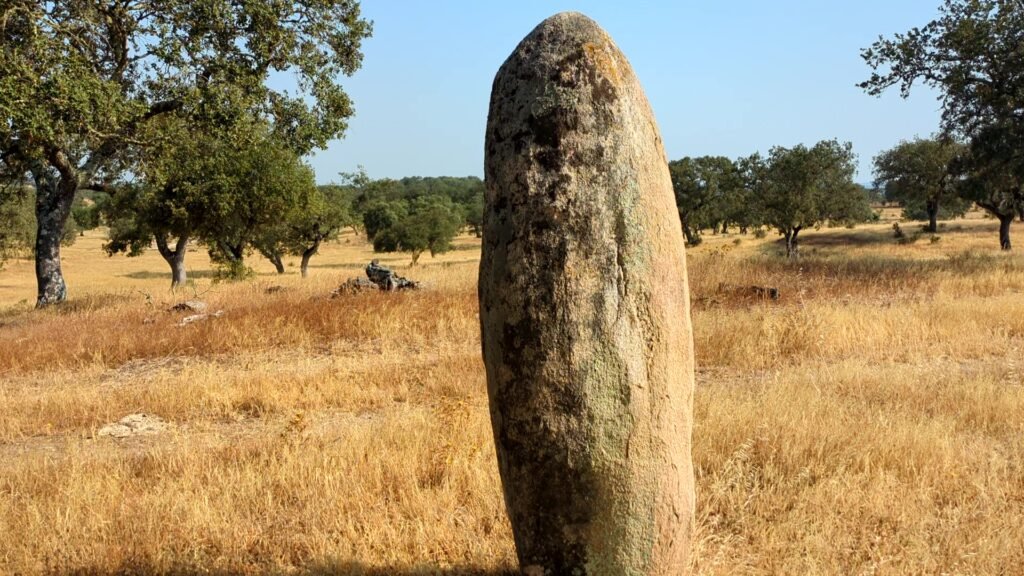
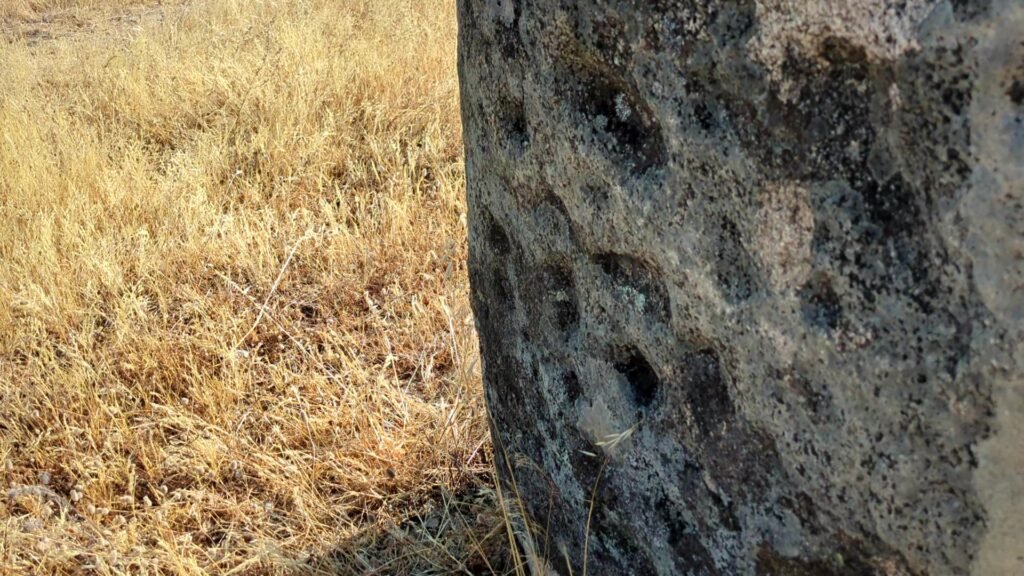
Location
The menires are in the Alentejo, district of Évora. They are in the municipality of Mora, near the town of Brotas. Brotas is a town on the EN2 (Estrada Nacional 2, “National Road 2”), about halfway between Mora (to the North) and Montemor-o-Novo (to the South). The menires are on private land in the hills about 6km southeast of Brotas. There is a geodesic marker immediately beside the main (cross-shaped) group of menires.
Coordinates: 38.8385100, -8.1185300
Access
You can only get to the menires by driving and walking through private property. There are some gates along the (private) road, which are not locked but are wired shut. You can open them and go through: just close them behind you! It is always best to ask permission, so if you meet any farmer do ask. (I met a farmer, João Lopes, who readily gave me permission when I told him what I wanted to see and said I would close the gates behind me.)
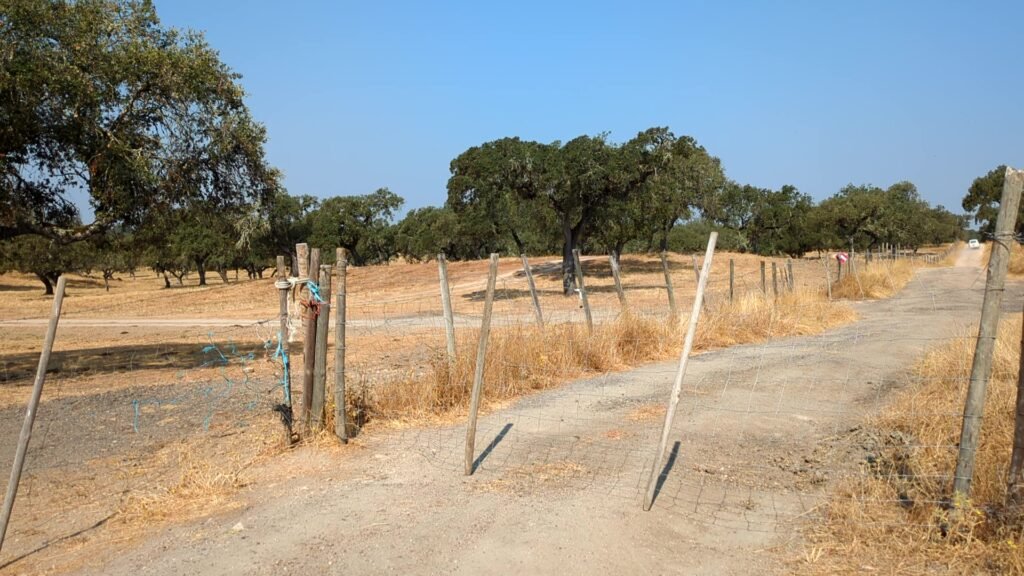
The roads through the property are farm roads: there are cows around, so please take care. The road is very rough, and in wet weather they could become impassible.
Signage
There are no signs directing you to the menires.
Links
- Description (in Portuguese) from the Megalithic Museum in Mora
- Article about its discovery (in Portuguese) from 2011, Público
- Description (in Portuguese) from Archaeologist’s Portal of Directorate-General of Cultural Heritage
- Listing (in Portuguese) by the Directorate-General of Cultural Heritage (no protection)
Nearby
There are a number of menires in the hills around this monument, all on private land and possibly not visitable. Most are completely undocumented.
For the casual visitor, the Interactive Megalithic Museum in Mora (about 15km away) does an excellent job of explaining and highlighting the many megalithic sites in the area, and what life was like then. About 7km south of Brotas, there is a group of three dolmens, the Antas do Herdade de Agua Doce, which lie right beside the EN2. There is another nearby cromlech, the Cromeleque das Fontainhas, which is about 5km east of Mora.
Sources
- Alvim, Pedro, and Leonor Rocha. “Os Menires Do Alto Da Cruz: Novos Dados E Algumas Reflexões Sobre O Megalitismo Da Área de Brotas (Mora).” Revista Portuguesa de Arqueologia, vol. 14, no. Vol 14, 1 Jan. 2011, pp. 41–55, www.researchgate.net/publication/262602708_Os_menires_do_Alto_da_Cruz_novos_dados_e_algumas_reflexoes_sobre_o_Megalitismo_da_area_de_Brotas_Mora. ↩︎
- Rocha, Leonor. “The Menhirs of Alto Da Cruz (Mora, Portugal) New Data, New Readings.” Madrider Itteilungen, no. 62, 2021, pp. 18–33, https://doi.org/10.34780/at0y-nf6a. ↩︎
- Campos, António Luís. “Refazer a Cronologia.” National Geographic Portugal, vol. 12, no. 143, Feb. 2013. ↩︎
